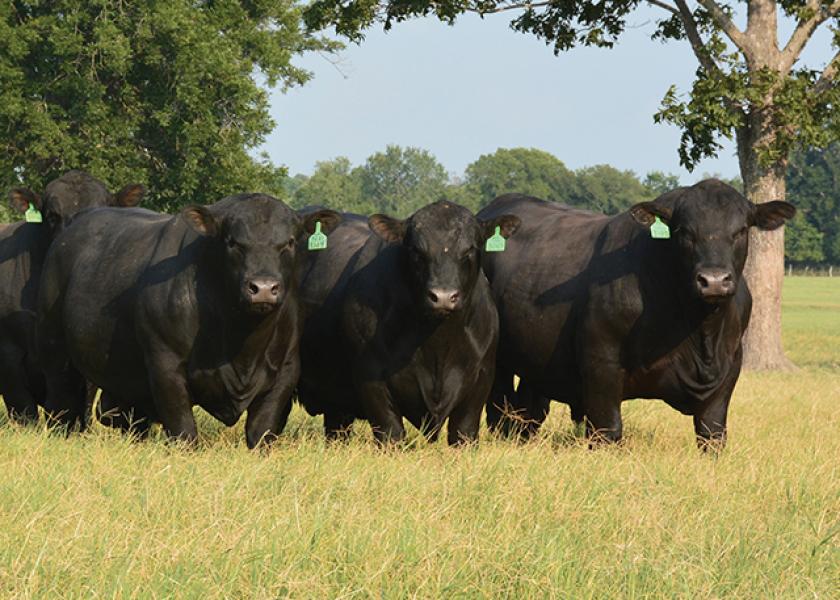Bull Selection Strategies that Improve Cattle Operation

This time of year, cattle producers begin looking for a new bull according to Patrick Davis, University of Missouri Extension regional livestock field specialist.
The first step in the selection process, according to Davis, is to determine your operational goals and how the new bull helps meet those goals. Also, bull to cow ratio is important to bull selection.
"A rule of thumb is the number of cows a bull is exposed to during the breeding season should equal his age in months up to 2 years. Bulls older than two years can be exposed to 25 to 35 cows comfortably," said Davis.
Next, select phenotypically sound bulls. Pay close attention to feet, legs and hip structure making sure bulls are structurally correct and move with ease. Also, bulls need adequate muscle and rib shape.
"Bulls that show these features have grown well and should pass those positive traits onto their progeny. Structurally sound bulls should stay in the herd longer, resulting in more return on investment," said Davis.
Once potential herd bull prospects are determined phenotypically sound, evaluate bulls genotypically by using expected progeny difference (EPD) information.
"I suggest purchasing bulls with genomically enhanced EPDs. A bull with these EPDs has improved accuracy, which means there is more confidence that bull's progeny will perform like the EPD's show," said Davis.
David has four basic suggestions when evaluating bull EPD's.
One, are bulls being bred to cows or heifers? Pay close attention to the calving ease direct (CED) EPD when bulls are bred to heifers. "Bulls bred to heifers need a high CED since that increases the chance that their progeny will be born unassisted," said Davis.
Two, are your calves sold at weaning or do you retain ownership to slaughter? Progeny sales point influences EPD utilization during bull selection. If calves are sold at weaning, place selection pressure on the weaning weight EPD without sacrificing other traits. "If calves are retained to slaughter, place selection pressure on growth and carcass trait EPDs without sacrificing other traits," said Davis.
Three, use multi-trait selection index EPDs. A multi-trait selection index EPD is a combination of multiple traits and their economic values into a one-dollar value that is used for selection purposes. "Using a selection index EPD that properly incorporates economic relevant traits into your cattle operation, improves progeny and operation profit potential," said Davis.
Four, use EPD percentile rank information in evaluating bull EPD's. EPD percentile ranks is probably the easiest way to determine where your potential bull prospects rank in relation to the rest of the bulls in the breed for traits of importance. The scale is from 1% to 99%. Bulls more favorable for a trait are closer to 1%. Bulls least favorable for a trait are closer to 99%. Bulls that you select should have EPD's close to 1% for traits that are important to your cattle operation.
"Use your eyes and mind to select bulls that phenotypically and genotypically improve the profit potential of your cattle operation," said Davis.







